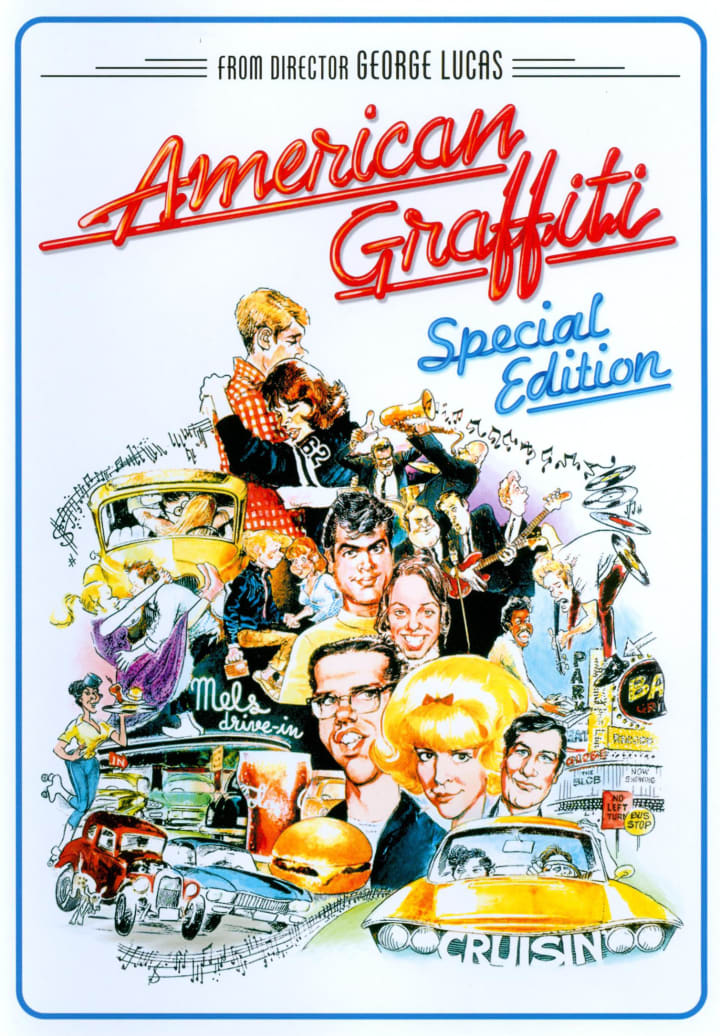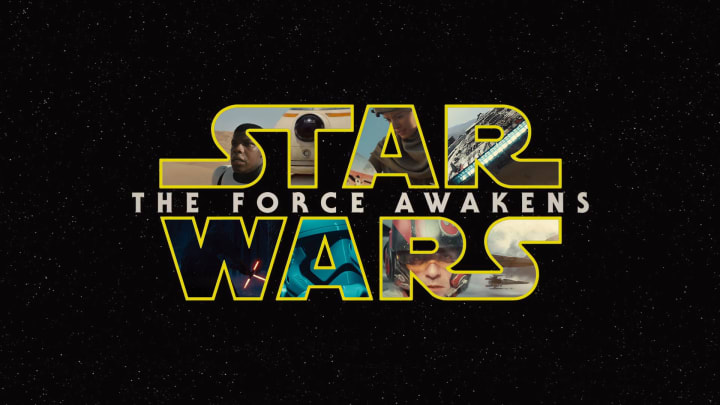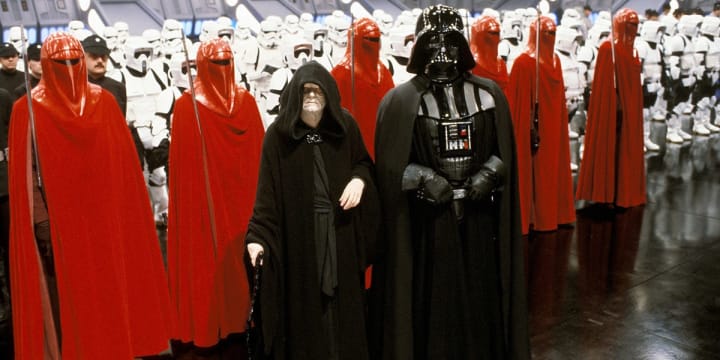Opinion: A Reflection Upon George Lucas and the Prequels
A deep dive

I’ve always believed the Prequels have the core of a great story – the rise and fall of Anakin Skywalker.
Anakin Skywalker is intended to be a tragic figure – much like Michael Corleone from The Godfather: a man who wanted to do good, only for power to corrupt him. As he becomes this toweringly malevolent presence, the only ember of humanity that remains is the regret that haunts him.
But how much did the Prequels do Anakin – and his story – justice?
That’s open to opinion. Most agree, though, that the Prequels are problematic. And, with that being the case, you have to start with the man in charge – writer, director, producer George Lucas. But is he solely responsible?
While writing can be a solitary pursuit, it doesn’t exist in that isolation for the extent of its journey. Other people come into play. Something I often think about is whether George Lucas was honestly and constructively challenged on the drafts he turned in – or if those drafts were turned in for script-editing at all.
The original drafts for A New Hope (which, back then, was known only as Star Wars) in no way resembled the product that hit our cinemas. Luke went through several incarnations – from being an old, battle-hardened Jedi, to a woman, to Mace Windu (yes, Mace); C3PO destroyed the Death Star; Darth Vader was originally a Boba Fett-like bounty hunter, among other changes.
At that time, although George Lucas was a promising upcoming filmmaker, he had only two features behind him: THX 1138 (1971) and American Graffiti (1973). As visionary and imaginative as he might’ve been, he was still an industry lightweight.

Undoubtedly, the people around him challenged him – challenged his story, his plot points, and his characters. This is a typical part of the writing process. Even a novelist, who works alone, will still have at least one editor who will challenge them on different facets of their story.
It’s a vital part of the creative process. Unbridled, a writer has neither parameters nor a gauge on what’s working and what isn’t. Their judgement grows clouded the longer they’re involved in a project. It’s like that saying, You can’t see the forest for the trees. That external input – that set of eyes that can be objective – is invaluable.
The Original Trilogy went through this process. You can see how A New Hope evolved. Burned out from doing so much on Episode IV, Lucas stepped back for The Empire Strikes Back and Return of the Jedi. He provided the story, but other writers tackled it. Other directors imposed their voice. Lucas’s overarching vision and guiding influence kept it largely on course.
By the time Lucas had decided to make the Prequels, he had become this living legend. He wasn’t even an industry heavyweight, but an industry icon. He had the Original Trilogy behind him. He’d effectively pioneered merchandising. He’d come up with Indiana Jones. Howard the Duck was a misfire, but it still showcased his daring in tackling zany comic-book material that the industry wouldn’t consider for another three decades.
Were people still challenging Lucas the same way? Or did they think, Who am I to challenge George Lucas? It’s a simple dichotomy that many artists – be they writers, filmmakers, musicians, etc. – evolve to: a level of stature where the people around them become yes-people and only tell them what they want to hear, either out of sycophancy or because they’re insecure (for whatever reason) to provide feedback.
Despite his success, George Lucas himself comes across as a relatively humble guy. And, as much as some revile the Prequels, they’re still bold in their way. They should get more credit for what they try to do, rather than being lambasted because they’re not what people expected..

The Force Awakens and The Rise of Skywalker largely echo A New Hope’s and Return of the Jedi’s structures. They’re quest-based stories that involve Big Bads: characters must go from here to there, then topple the Big Bad – a mega-weapon in their first installments, and a mega-weapon and uber-villain in their conclusions. They’re very straightforward, and that helps audiences in conceptualizing what the stories are doing, where they're heading, and what needs to be done.
While The Phantom Menace weaves a control ship into its epilogue, it's only as a backdrop while the story moves the characters into place: Palpatine into a position where he’s gaining power in the Senate, Anakin into an apprenticeship with the Jedi, Obi-Wan into this foreign role as teacher, and the New Republic into the awareness that there is a new threat out there – the titular phantom menace.
Attack of the Clones and Revenge of the Sith do something similar: they continue Anakin’s journey. AotC is Anakin’s rise as a Jedi and his marriage to Padmé, while Revenge of the Sith sees his fall. Events around him – the maneuvering of Palpatine, the clone armies, the ongoing war – become a landscape to repeatedly contextualise where these characters stand.
Now while the debate remains on how well Lucas pulls this off, the point here is to simply highlight that Lucas was trying something different – and something far more complex than the Original Trilogy.
Lucas had to deliver a trilogy that concluded at a predetermined outcome, satisfied the anecdotal canon from the Original Trilogy (which, admittedly, he doesn’t always do justice), while keeping audiences entertained, engaged, and giving them more Star Wars.
But because the playground didn't have clear quest-based objectives – i.e. there wasn't a Big Bad (either a mega-weapon, or uber-villain) to topple – this might've unsettled audiences, confused them, or convinced them this wasn't Star Wars (or at least the Star Wars they wanted). Whether you love The Force Awakens or abhor it, you can see it prioritized grounding its audiences in familiarity, whereas Lucas decided to take his narrative somewhere new.
He also plays with the visuals – from ships, to underwater cities, to the water-world of Kamino (and their beautiful aliens), to the lava-world of Mustafar. He doesn’t just copy and paste and, while some of the effects and CGI backdrops have a certain surrealism, I believe he’s trying to represent the galaxy as this warm, comfortable, ethereal place – before the dark times, before the Empire.

Star Wars was always meant to be this epic mythology that perpetuated a fairy tale quality. It’s built into the opening text crawl: a long time ago in a galaxy far, far away is Lucas’s version of, Once upon a time. That's the palette Lucas uses. It's not just about the aesthetics. The Sequels are far prettier but, in my opinion, lacked tone. They became generic sci-fi, rather than finding the voice of that mythic quality.
Lucas aspired to give us that. He might’ve missed, but at least he tried to do something original, rather than rehash his Original Trilogy, or be subversive for the sake of perpetuating the affectation that he’s offering us some audacious and mature narrative.
Looking at the Prequels – particularly with the coolness of time and distance – they are imperfect, but they still have lots of great moments, and are also brimming with, for the most part, unrealized potential.
Watching them now, you can only wonder what might’ve been.
Written By LeKoupa
Source(s): Ranker
Syndicated From Culture Slate
About the Creator
Enjoyed the story? Support the Creator.
Subscribe for free to receive all their stories in your feed. You could also pledge your support or give them a one-off tip, letting them know you appreciate their work.






Comments
There are no comments for this story
Be the first to respond and start the conversation.